Samsung Galaxy Z Fold 2 unveiled: Price, specs and features
The Galaxy Z Fold 2 arrives on September 18 for $1,999
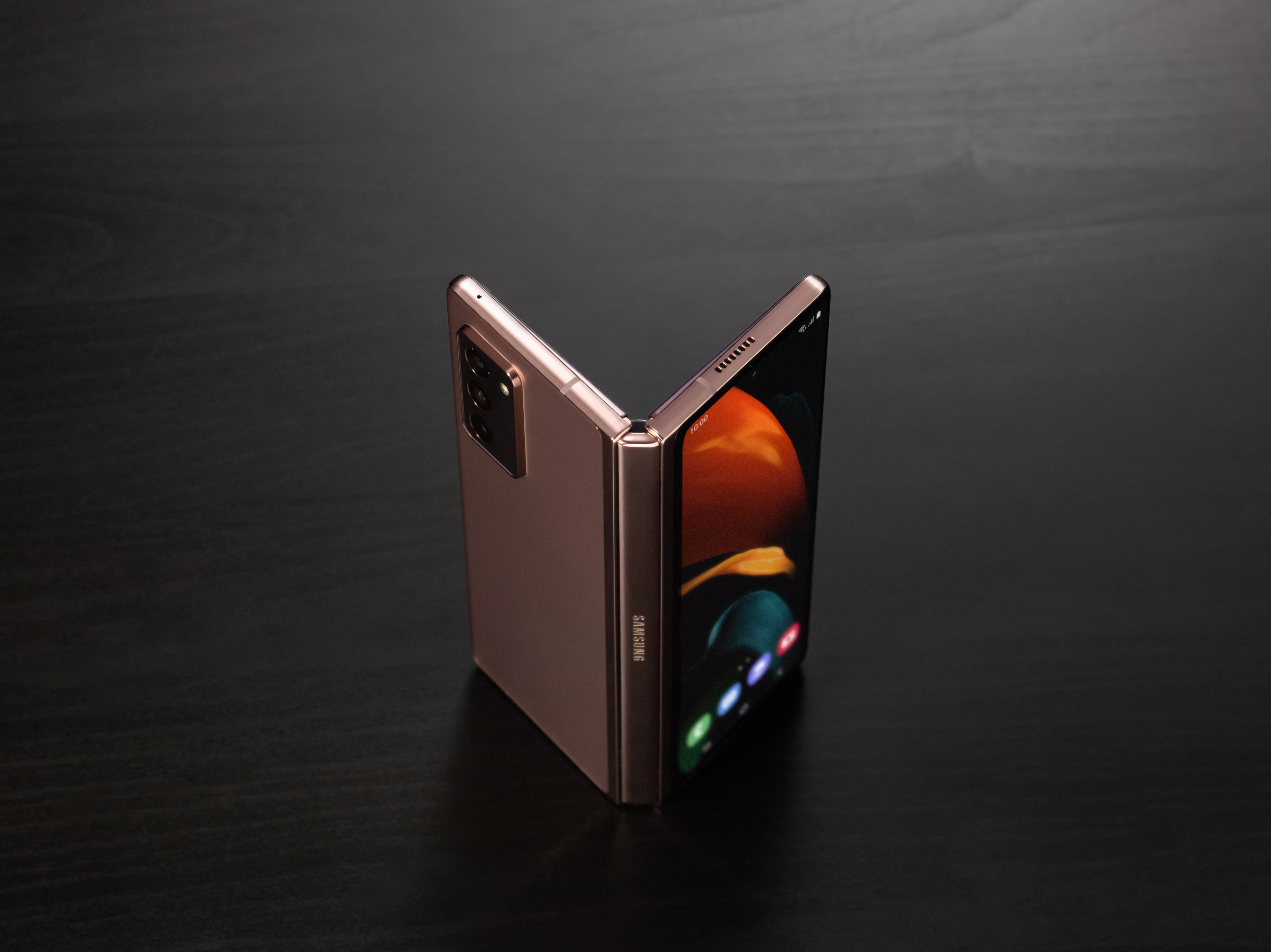
Samsung released the full details of the Galaxy Z Fold 2 today after announcing the foldable smartphone at its Unpacked event in August.
The latest attempt to clean the slate after the Galaxy Fold debacle, the Galaxy Z Fold 2 looks to improve upon its predecessor in several areas. The Z Fold 2 has a new camera setup, a larger external display, 5G connectivity, and refreshed internals, among other changes.
- Samsung Galaxy Note 20 Ultra vs Galaxy S20 Ultra: Which flagship is best?
- Samsung Galaxy Tab S7 Plus review (hands-on)
- iPhone 12: Rumors, release date, price, specs and more
If you're confused about the name, the Galaxy Z Fold 2 is the successor to the Galaxy Fold, but was renamed to match the Galaxy Z Flip and join the Galaxy Z series. It still folds outward (hot dog-style, if you will) but has a larger 6.2-inch screen on the front and a massive 7.6-inch panel when unfolded.
Galaxy Z Fold 2 release date and price
The Galaxy Z Fold 2 costs $1,999 unlocked and will be available for pre-order at midnight on September 12 in Mystic Bronze and Mystic Black. The phone will officially arrive on September 18. Those who own the Galaxy Fold and Galaxy Flip can get up to $800 in trade-in value.
The Galaxy Z Fold 2 Thom Browne edition will be available for pre-order beginning September 2 with availability on September 25, 2020.
Galaxy Z Fold 2 specs
| Row 0 - Cell 0 | Galaxy Z Fold 2 |
| Displays | 7.6 inches (foldable, 120Hz) + 6.2 inches (60Hz) |
| CPU | Qualcomm Snapdragon 865+ |
| RAM | 12GB |
| Storage | 256GB |
| Main Cameras | 12MP (wide), 12MP (ultra-wide), 12MP (telephoto, 2x optical or 10x digital) |
| Front camera | 10MP (front), 10MP (rear) |
| Battery size | 4,500 mAh |
| Colors | Mystic Bronze, Mystic Black |
| Size | 6.2 x 2.6 x 0.66 inches (closed); 6.2 x 5 x 0.27 inches (open) |
| Weight | 9.9 ounces |
Galaxy Z Fold 2 design
Samsung must have known the tiny front display, or CoverScreen, on the Galaxy Fold wasn't going to fly a second time. In its place is a 6.2-inch panel that expands across the entire front of the phone. I'll go into more detail about the panel later, but the enlarged display does wonders to the Z2 Fold 2's appearance. To keep the size down, Samsung reduced the bezels around the panel by 27%.

The phone is thinner than the previous model at 0.23 inches (versus 0.27) when unfolded or 0.66 inches (vs 0.67 inches) when folded. However, the new model weighs more than the previous at 9.9 ounces compared to 9.7 ounces. That extra weight can likely be attributed to the ultra-thin glass used in place of the more fragile plastic screen on the Galaxy Fold.
Sign up to receive The Snapshot, a free special dispatch from Laptop Mag, in your inbox.
The edges of the Galaxy Z Fold 2 are curved to improve the feel in your hand, but make no mistake, this is one large phone even when folded. At 6.3 x 2.7 inches, the Galaxy Z Fold is about the size of the Galaxy S20 and a bit smaller than the Galaxy Note20 or Galaxy S20 Ultra.
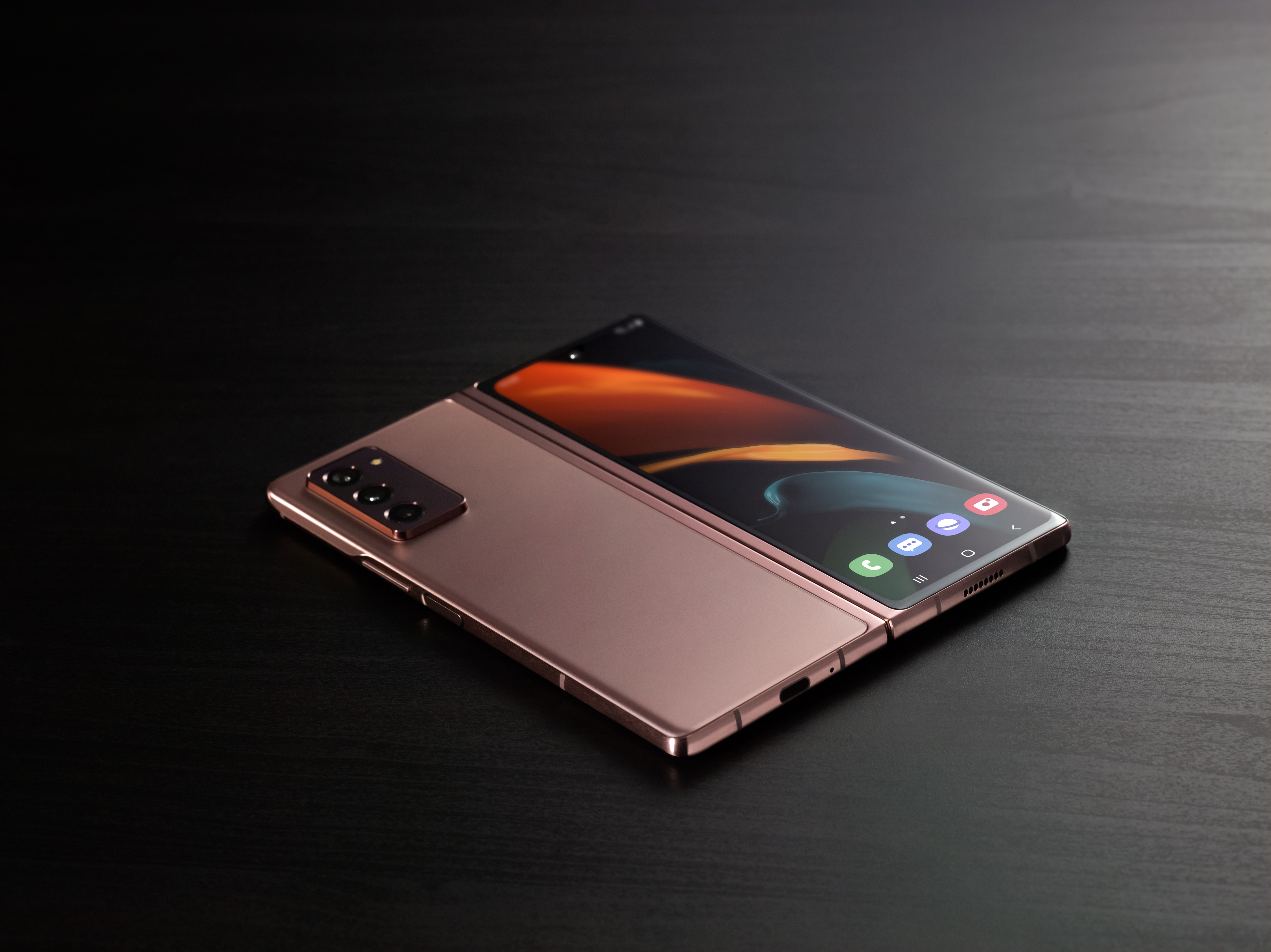
On the back of the device is a rectangular camera module with three lenses positioned in a vertical row. The module appears to protrude far from the body, which could be problematic when placing the phone on a flat surface.
Open the phone, and it'll greet you with a foldable 7.6-inch display. The wide notch on the top-right corner of the display has been replaced by a much less intrusive hole punch front-facing lens that lets the display stretch from one end of the phone to the other with minimal disruption. Hidden on each side of the foldable display are speakers with vibration plates, which Samsung touts as the best-sounding on any Galaxy device.
There are a few options for logging in. You can use either facial recognition or a capacitive fingerprint sensor on the side.
Galaxy Z Fold 2 durability
You will want to read this section closely after what happened with the original Galaxy Fold. In case you forgot, Samsung sent a handful of reviewers a Galaxy Fold before its official release. Within a few days, there were reports of various issues. Screens broke, debris got caught in the hinge, a permanent layer of the screen could be peeled off — it was a disaster. So Samsung put a freeze on and the phone and went back to the drawing board. V.2 was a definite improvement, but still widely panned by critics for being frail and impractical.
Enter the Galaxy Z Fold 2, a product of everything Samsung learned while developing the Galaxy Fold and the Galaxy Z Flip — the hamburger-style folding phone it released a few months ago. When asked about the Z Fold 2's durability, Samsung said it would borrow a lot from the Z Flip, including its cam mechanisms and sweeper technology.

What does all that terminology mean? Tiny gears, or cams, in the hideaway hinge are designed to allow for smooth motion, but are rigid enough to let one side of the screen stand open from a 75-degree to a 115-degree angle. To prevent dust and grime from getting in, the Z Fold 2 employs "sweeper technology" or fibers that cover any gaps but are pliable enough to withstand bending.
We won't know how well the Galaxy Z Fold 2 holds up until we get to spend some time with it. What's clear, however, is that the phone has come a long way since its beleaguered beginnings.
Samsung Galaxy Z Fold 2 colors
Samsung says it works with "global color experts" when deciding on what hues to offers its phones. For the Galaxy Z Fold 2, the company opted for Mystic Black and Mystic Bronze — the signature color of its new Galaxy devices — with a haze finish. The bronze tone evokes the luxuriousness of gold jewelry, but has a unique sheen that reflects different colors (pinks, purples and golds) depending on the lighting.
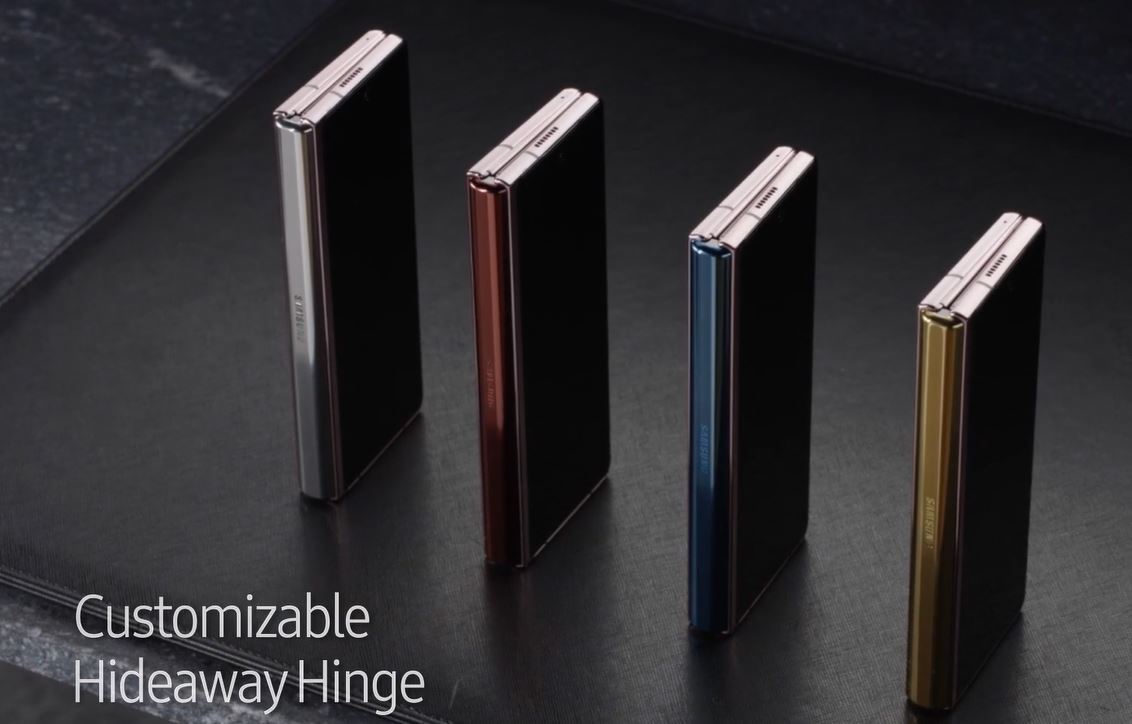
If you don't want your phone to look like everyone else's, you can customize the hinge, or spine, of the Galaxy Z Fold 2 by choosing from four other colors: Metallic Red, Metallic Silver, Metallic Gold and Metallic Blue.
Samsung will also sell a Thom Browne edition of the Galaxy Z Fold 2 that features red white and blue pin-striping on a grosgrain pattern on the back of the device. Software in the form of a new lock screen and exclusive photo filters will match the exterior design. Each Thom Browne Edition packages comes with a Galaxy Z Fold 2, Galaxy Watch 3, and Galaxy Buds Live. We don't have pricing yet but we expect this to cost a small fortune.
Galaxy Z Fold 2 display
The 7.6-inch foldable display, or what Samsung considers the "main screen," now features a 120Hz refresh rate for smoother scrolling and animations. You can set this manually or enable adaptive refresh rates, which will automatically adjust the rate from 11Hz to 120Hz to balance performance with battery life (higher refresh rates require more power).

Now let's get into the specs. The main screen is a 7.6-inch QXGA+ Dynamic AMOLED display with a 2208 x 1768 resolution for a density of 373 pixels-per-inch. The actual viewing area is a bit less than 7.6 inches because the panel has rounded corners.
Among the most significant changes made to the Galaxy Z Fold 2 was expanding the front screen. The 4.6-inch panel on the Galaxy Fold was so misplaced that it made the phone seem like an unfinished prototype. With the new front display, a 6.2-inch, HD+ Super AMOLED panel with a 2260 x 816 resolution, the Galaxy Z Fold 2 looks like a fully realized concept.
Galaxy Z Fold 2: Using the display
The 7.6-inch display will undoubtedly look great, but what can you actually do with a foldable display? For one, you can expand what you're looking at on the front screen by simply opening the phone. Samsung calls this "app continuity" and it works by quickly transitioning an app from the front screen to the main screen upon unfolding the phone.
I could see myself using this feature while watching YouTube videos. I'd find the video using the front screen because of the more manageable ergonomics then unfold the screen to watch the clip on the full 7.6-inch panel. You could do the same when using Google Maps if you wanted a larger map or for more immersive gaming sessions. This does require some cooperation from Android developers — unoptimized apps will show black bars on the sides when open on the larger screen.

The Galaxy Z Fold 2 will enter split-screen mode when you unfold it between 80 and 160 degrees with content appearing on the top half and controls dropping to the bottom. For example, a music streaming service might show you the album art on the top screen and put play/pause/skip/previous on the bottom panel. Or, in this "Flex Mode," you could see video chat participants on the top half of the screen and keep mute/unmute and end call buttons on the bottom. Again, this only works when apps are optimized to recognize when the phone is folded to certain angles.
Three apps can run on the Galaxy Z Fold 2 simultaneously and the layout of these apps is customizable via an on-screen icon. The same app can be open in two different windows so you don't need to return to the previous page. Instead, a webpage can be left open on one side of the screen while a new link from that page is opened on the other half, similar to the "open link in new window" option in your web browser.
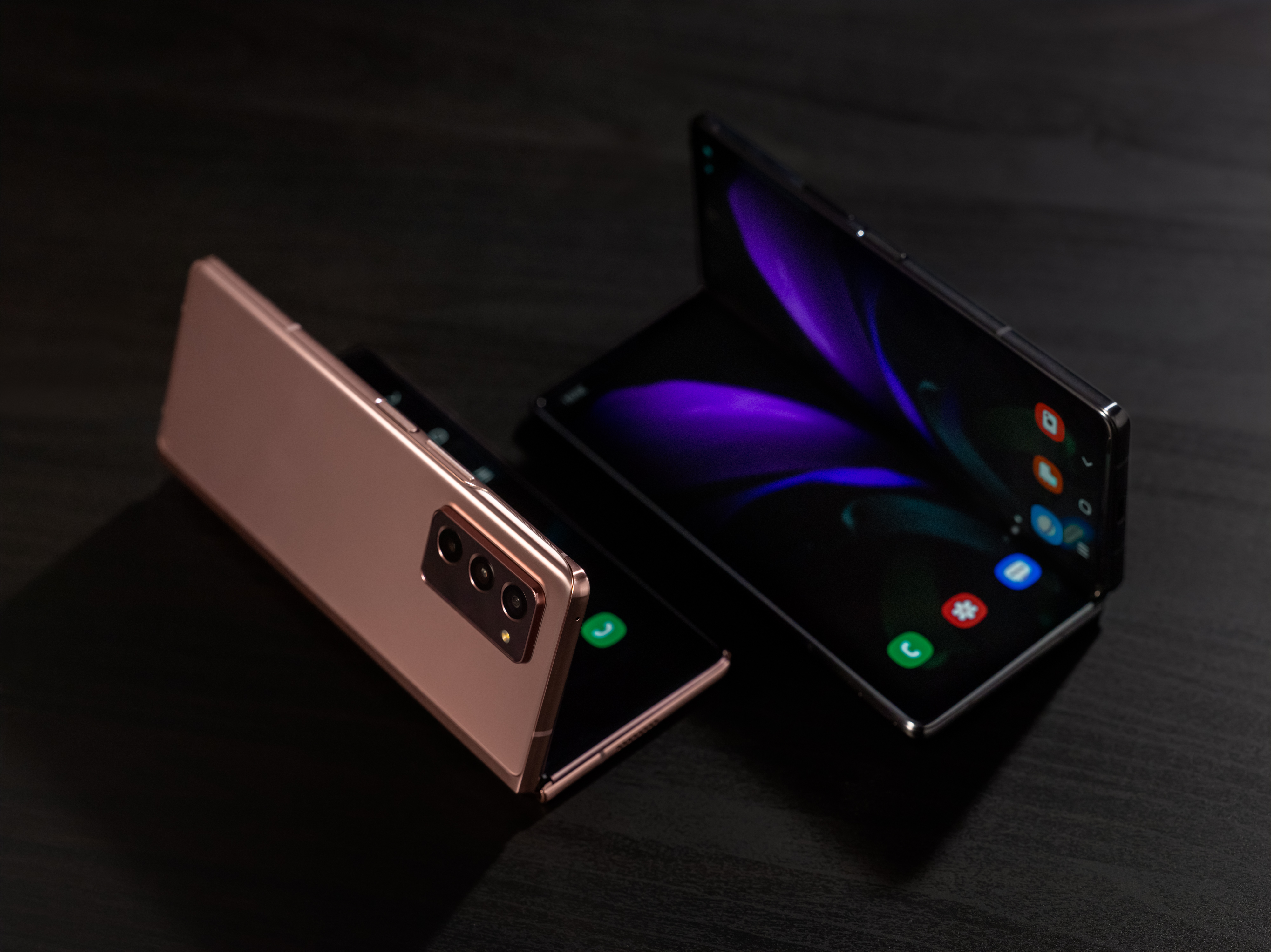
You can create app groupings that open simultaneously. These presets can even be positioned in a specific layout so the apps retain the same arrangement each time you open the grouping. Arguably the most interesting thing about the Galaxy Z Fold 2's software is how apps interact with each other. A simple drag-and-drop gesture can be used to transfer text, files and photos from one app to another. And sending screenshots is as simple as swiping an image from one window to the next.
You can also take advantage of the foldable screen while taking photos. A camera interface unique to Samsung's foldable phones shows the latest photo you captured on the left side of the main screen and keeps the viewfinder on the right side. This way, you can instantly see how the photo turned out and decide whether you need to retake it. I'll discuss some of the other useful tricks in the next section.
Galaxy Z Fold 2 cameras
There are five, count 'em five, cameras on the Galaxy Z Fold 2: one on the front cover, the hole-punch lens on the main display and three more on the back.
The front selfie cam has a 10 megapixel, F/2.2 lens with an 80-degree field of view, matching the 10MP, f/2.2 front camera on the main foldable display.
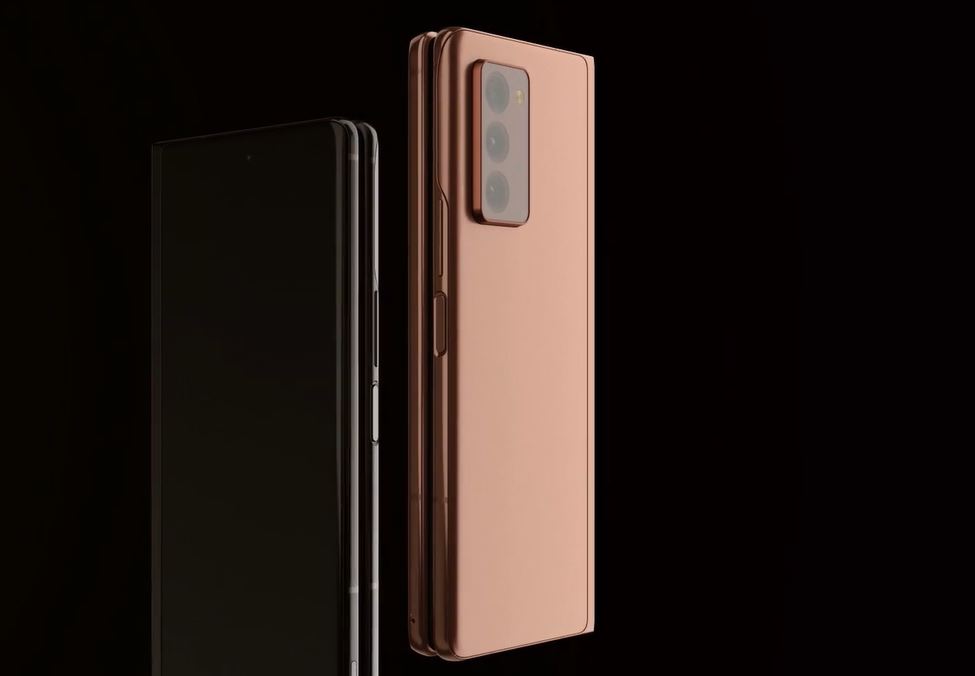
The triple rear camera setup includes a primary 12MP, F/2.4 lens with optical image stabilization and an 83-degree FOV. There is also a 12MP ultra-wide angle lens with a 123-degree FoV and a 12MP, F/2.4 telephoto (zoom) lens with OIS and a 45-degree FOV. The zoom lens supports up to 2x optical zoom and 10x digital zoom.
While an upgrade (on paper, at least) over the Galaxy Fold's cameras, the Galaxy Z Fold 2 still lags behind other Galaxy flagships. Because it lacks the 108MP camera on the Note 20 or Galaxy S20 Ultra, the Z Fold 2 can't take shots with 50x or 100x zoom.
It compensates for those shortcomings with some clever methods for taking photos. You can take selfies using the camera on the front of the device or you can use the high-res main camera by unfolding the phone and turning it around so the triple camera module faces you. Using this same method, your subject can preview how they look with the front panel while you use the main foldable display to take a photo.
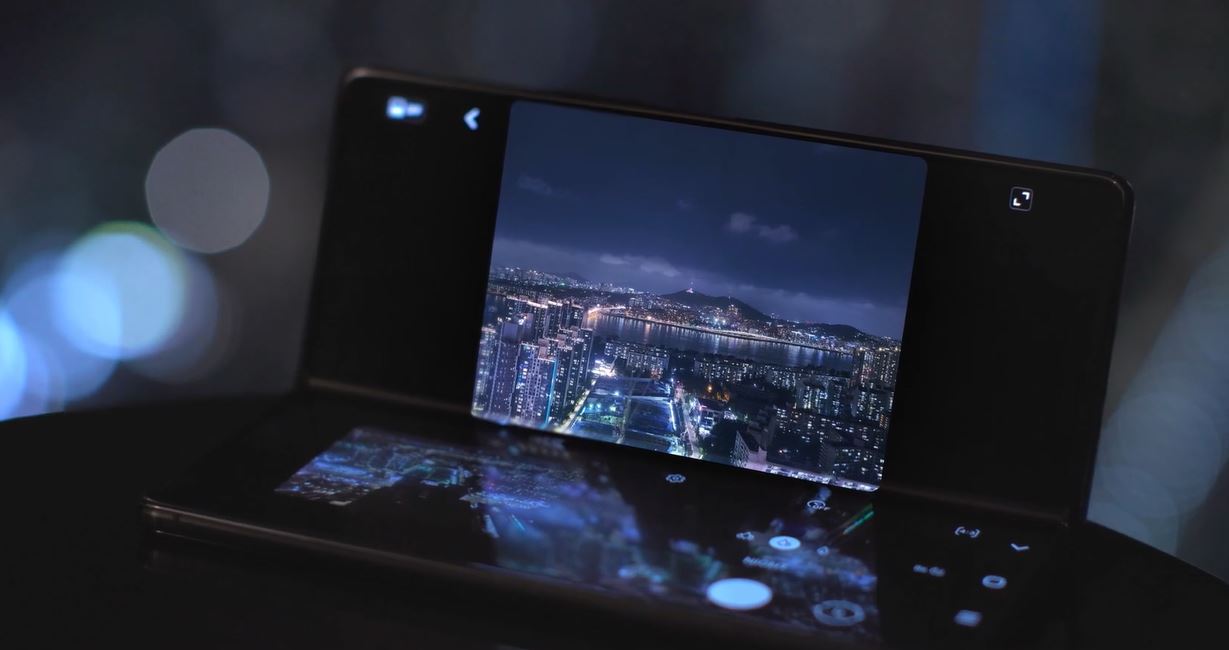
Adopting features from other Galaxy devices, the Z Fold 2 comes with Night Mode for dark shots and Single Take, which takes up to 14 different photos and videos with a single press of the shutter button.
The Galaxy Z Fold 2 supports 4K video recording, but not 8K as you'll find on the Galaxy Note 20. There is a video pro mode for those who want to tinker with the zoom speed, stereo mic levels and sound recording options.
Galaxy Z Fold 2 battery life and charging
Keeping the displays powered is a 4,500mAh battery. Samsung didn't provide any battery life ratings so we'll run our own tests once we get the device into our lab. Poor battery life was one shortcoming of the Galaxy Fold, which had a 4,380mAh battery, so we hope Samsung has some tricks up its sleeve for extending the runtime of the Z Fold 2.
When the phone runs low on juice, you can use Fast Charge to quickly recharge it or place it on a wireless Qi charger.
Outlook
This phone might have a "2" in its name but this is really the third iteration of the Galaxy Fold. The first was a failure, requiring a redesign of the hinge to improve durability while the second is the Galaxy Fold available on the market today. Released between the Galaxy Fold and the Galaxy Z Fold 2, the Galaxy Z Flip, a modern version of a flip phone, is Samsung's second foldable phone.
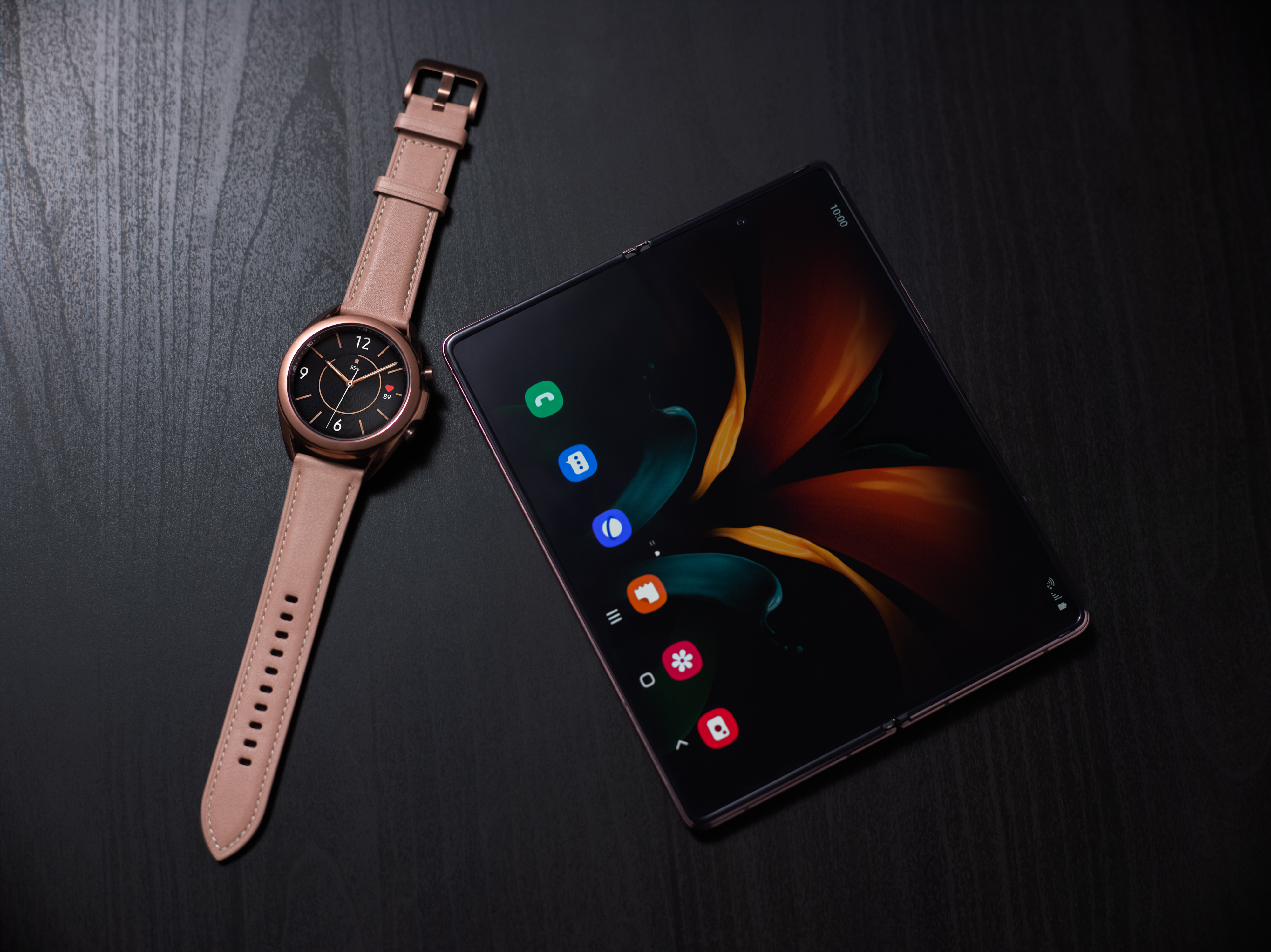
Samsung has revised its formula each step of the way to give us the Galaxy Z Fold 2, a phone that looks to improve upon its predecessor in every way. The front display is much larger, and now covers the entire front of the phone. The main foldable screen, which now runs at 120Hz, was also expanded, and the distracting notch was replaced with a hole-punch camera. You also get internal upgrades, including 5G support. But perhaps most important are the refinements to durability, which can be attributed to the technology found in the Galaxy Z Flip.
The more I wrote about the Galaxy Z Fold 2, the more I became excited to test it. The hardware finally seems to be in a good place and Samsung has some clever ways of optimizing the software to get the most out of the unique form factor. There are still concerns that can only be addressed when we get our hands on a review unit: will the Galaxy Z Fold 2 last a full day on a charge? Do the cameras match those on the Galaxy S20 or Note 20? Will it crumble if it takes a fall? Check back in with us in the coming weeks for our full review where we'll answer each of these questions.
Phillip Tracy is the assistant managing editor at Laptop Mag where he reviews laptops, phones and other gadgets while covering the latest industry news. After graduating with a journalism degree from the University of Texas at Austin, Phillip became a tech reporter at the Daily Dot. There, he wrote reviews for a range of gadgets and covered everything from social media trends to cybersecurity. Prior to that, he wrote for RCR Wireless News covering 5G and IoT. When he's not tinkering with devices, you can find Phillip playing video games, reading, traveling or watching soccer.

